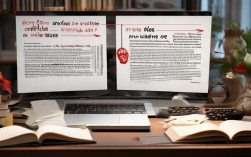Of course! Here is a comprehensive guide to public speaking skills in English, broken down into key areas with specific vocabulary and phrases.

Public Speaking Skills: A Comprehensive Guide
Public speaking is a skill that can be learned and improved with practice. Mastering it involves not just what you say, but how you say it and how you present yourself.
Here are the essential skills, categorized for clarity.
Part 1: Preparation is Key (The Foundation)
A great speech starts long before you step on stage.
Know Your Audience
- Why it's important: Tailoring your message to your audience makes it relevant and engaging.
- Key Questions:
- Who are they? (e.g., experts, students, general public)
- What do they already know about my topic?
- What do they want or need to learn?
- What are their expectations?
Define Your Core Message
- Why it's important: If you can't summarize your message in one sentence, your audience won't be able to either.
- How to do it: Ask yourself, "If my audience remembers only one thing, what should it be?"
- Example: "The key takeaway from my presentation is that AI will not replace jobs, but it will transform them."
Structure Your Speech Logically
A clear structure helps your audience follow your argument easily. The classic structure is:
- Introduction (The Hook): Grab their attention and state your purpose.
- Body (The Core Message): Present your main points with supporting evidence, stories, and data. (Usually 2-4 main points).
- Conclusion (The Takeaway): Summarize your key points and end with a strong, memorable closing statement.
Craft a Strong Opening and Closing
- Opening (The Hook): Start with something powerful to grab attention.
- A surprising statistic: "Did you know that 75% of people fear public speaking more than death?"
- A provocative question: "What if I told you that the secret to success isn't working harder, but working smarter?"
- A short, relevant story: "Let me tell you about a time I completely failed at a presentation..."
- A powerful quote: "As Steve Jobs once said, 'Your work is going to fill a large part of your life...'"
- Closing (The Takeaway): End on a high note.
- Summarize your main points.
- Call to action: "So, I urge you all to try this new technique starting tomorrow."
- End with a powerful story or quote that reinforces your message.
- Leave them with a final, memorable thought.
Practice, Practice, Practice
- Rehearse aloud: Don't just read your notes silently. Practice saying the words.
- Time yourself: Ensure your speech fits within the allotted time.
- Practice in front of a mirror or record yourself: This helps you check your body language and verbal delivery.
- Practice in front of a friend or small group: Ask for honest feedback.
Part 2: Delivery and Performance (The Show)
This is how you bring your words to life.
Body Language (Non-Verbal Communication)
- Eye Contact: Connect with different people around the room. Don't stare at the back wall or your notes. This builds trust and engagement.
- Posture: Stand up straight with your shoulders back. Project confidence.
- Gestures: Use natural hand gestures to emphasize points. Avoid fidgeting (e.g., playing with a pen, crossing your arms).
- Facial Expressions: Let your face show your emotion and passion. A smile can be very disarming and friendly.
Vocal Variety
A monotone voice is the fastest way to lose an audience.
- Pace: Vary your speed. Slow down for important points and speed up for stories or lists.
- Pitch: Change the highness or lowness of your voice to convey different emotions.
- Volume: Use volume to add emphasis. Speak loudly enough to be heard, but don't shout.
- Pauses: The power of the pause cannot be overstated. A pause before or after an important point gives the audience time to absorb it and adds dramatic effect. It also helps you collect your thoughts.
Use Visual Aids Wisely
- Slides are a support, not the script. Your audience should be listening to you, not reading your slides.
- Keep it simple: Use minimal text, high-quality images, and clear charts.
- The 10/20/30 Rule (by Guy Kawasaki): No more than 10 slides, present for no more than 20 minutes, and use no font smaller than 30 points.
Part 3: Handling Q&A and Nerves
Managing Nervousness
It's normal to be nervous. The goal is not to eliminate it, but to manage it.
- Reframe anxiety as excitement: Tell yourself you're excited to share your ideas.
- Focus on your message, not yourself: Shift your attention from "How am I doing?" to "What value am I providing?"
- Take deep breaths: Before you start, take a few slow, deep breaths to calm your nervous system.
- Start strong: A confident beginning will set the tone for the rest of your speech.
Handling Questions and Answers (Q&A)
- Listen carefully: Make sure you understand the question before answering. Paraphrase it if necessary: "So, if I'm understanding you correctly, you're asking about..."
- Be honest: If you don't know the answer, it's okay to say, "That's a great question. I don't have that information with me, but I will find out and get back to you."
- Manage difficult questions: Stay calm and professional. Don't get defensive. You can acknowledge the person's feeling: "I can see why you would be concerned about that..."
- Bridge to your next point: If a question is off-topic, you can politely say, "That's an interesting point, but to stay on time, let's focus on the core issues for now."
Useful English Phrases for Public Speaking
Here are practical phrases you can use during your speech.
Starting the Speech
- "Good morning/afternoon, everyone. Welcome to today's presentation on..."
- "Thank you for being here. My name is [Your Name], and I'm here to talk about..."
- "It's a pleasure to be in front of such a distinguished audience."
- "Let's get straight to it. Today, I want to convince you that..."
Structuring Your Speech
- "I'll start by giving you some background on the topic."
- "First, let's look at the main challenges we face."
- "Moving on to my second point, which is about the opportunities."
- "That brings me to my final point."
- "To sum up, the key takeaways are..."
- "In conclusion, I want to reiterate that..."
- "So, what does all this mean for us? It means we need to act now."
Engaging the Audience
- "Have you ever wondered...?"
- "Think about the last time you..."
- "I'm sure many of you can relate to this."
- "Let me paint a picture for you..."
- "This might sound surprising, but..."
Visual Aids
- "As you can see from this slide/chart..."
- "This graph clearly illustrates a sharp increase in..."
- "Let me draw your attention to this specific number..."
- "On the next slide, we'll see..."
Handling Q&A
- "I'd be happy to take some questions now."
- "That's an excellent question."
- "That's a very fair point."
- "I see what you mean. However, I would argue that..."
- "That's outside the scope of my talk today, but it's a great topic for further discussion."
- "Thank you for your question."
By mastering these skills and practicing consistently, you can transform from a nervous speaker into a confident and compelling one. Good luck











